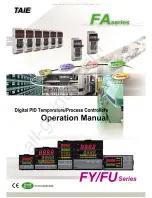
Analog-to-digital converter (ADC)
RM0090
408/1731
DocID018909 Rev 11
Dual ADC mode
At the end of conversion event on ADC1 or ADC2:
•
The converted data are stored into the ADC_JDRx registers of each ADC interface.
•
A JEOC interrupt is generated (if enabled on one of the two ADC interfaces) when the
ADC1/ADC2’s injected channels have all been converted.
Figure 52. Injected simultaneous mode on 4 channels: dual ADC mode
Triple ADC mode
At the end of conversion event on ADC1, ADC2 or ADC3:
•
The converted data are stored into the ADC_JDRx registers of each ADC interface.
•
A JEOC interrupt is generated (if enabled on one of the three ADC interfaces) when the
ADC1/ADC2/ADC3’s injected channels have all been converted.
Figure 53. Injected simultaneous mode on 4 channels: triple ADC mode
13.9.2 Regular
simultaneous
mode
This mode is performed on a regular group of channels. The external trigger source comes
from the regular group multiplexer of ADC1 (selected by the EXTSEL[3:0] bits in the
ADC1_CR2 register). A simultaneous trigger is provided to ADC2 and ADC3.
Note:
Do not convert the same channel on the two/three ADCs (no overlapping sampling times for
the two/three ADCs when converting the same channel).
In regular simultaneous mode, one must convert sequences with the same length or ensure
that the interval between triggers is longer than the long conversion time of the 2 sequences
(Dual ADC mode) /3 sequences (Triple ADC mode). Otherwise, the ADC with the shortest
sequence may restart while the ADC with the longest sequence is completing the previous
conversions.
Injected conversions must be disabled.
#(
#(
#(
#(
#(
#(
#(
#(
!$#
!$#
4RIGGER
%NDOFCONVERSIONON!$#AND!$#
#ONVERSION
3AMPLING
#(
#(
AI
#(
#(
#(
#(
#(
#(
#(
#(
!$#
!$#
4RIGGER
%NDOFCONVERSIONON!$#!$#AND!$#
#ONVERSION
3AMPLING
#(
#(
AI
#(
#(
#(
#(
!$#
#(
















































